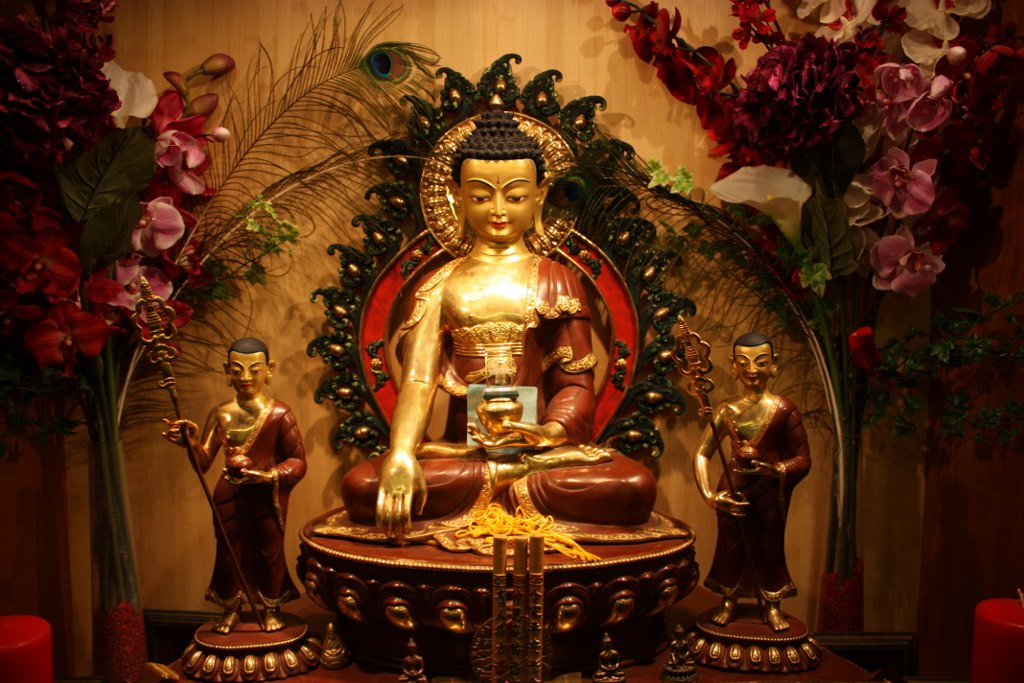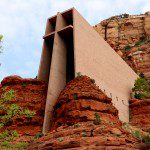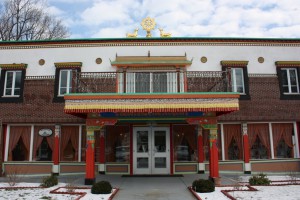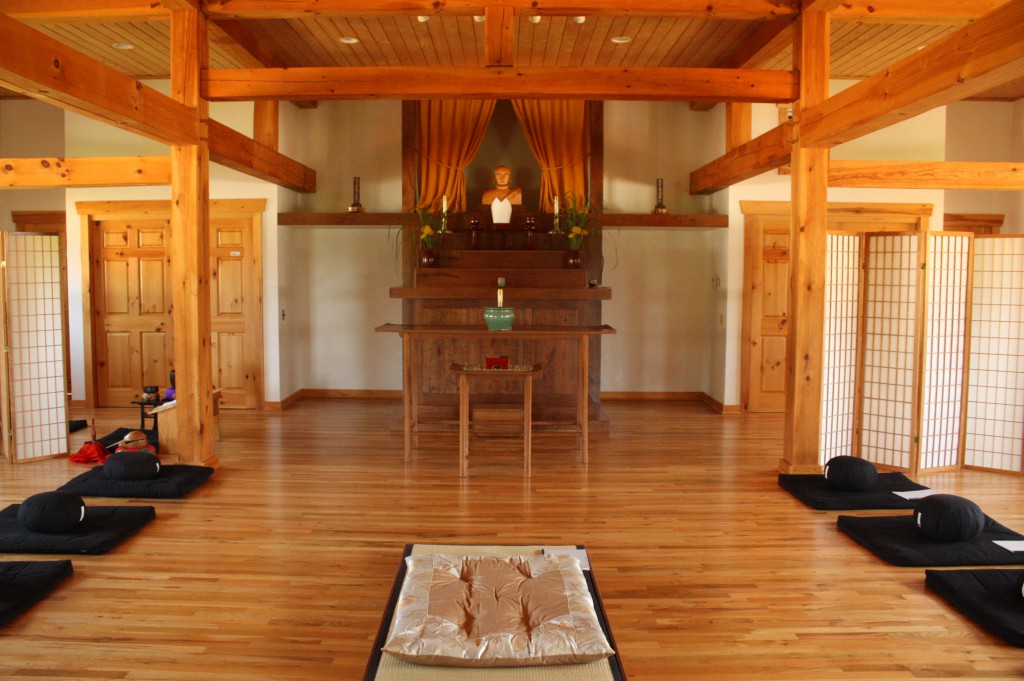
Inside the main hall of the Drepung Gomang Institute, gilded statues of the Buddha and brilliantly colored images of fierce deities adorn the altar. As the smell of incense wafts through the air, a Tibetan monk chants a sutra, his low tones weaving a soothing, meditative melody.
Dharamsala? Lhasa? Some remote outpost in the Himalayas? Nope–it’s a suburban neighborhood in Louisville, Kentucky. This Tibetan Buddhist temple is just one of a growing number of such centers that have found a surprisingly receptive home in the Midwest.
One of the things I love about my work is the unexpected opportunities it gives me–for example, being introduced to this center. My path to that place actually began two years ago when I visited Kentucky sites relating to the life of the Trappist monk Thomas Merton (see A Thomas Merton Tour). My interest in spiritual travels led to another invitation to the area, this time to write about the upcoming visit of His Holiness the Dalai Lama to Louisville on May 19 to 21. As part of the background research, last week I was part of a small group of writers who toured Tibetan Buddhist sites in Louisville and nearby Bloomington, Indiana. Over the next few posts I’ll be telling you about what I experienced.
I learned much during my time there, but I think my primary impression is how incredibly resilient a tradition Tibetan Buddhism is. More than almost any religion, it has suffered terrible persecution. Since Tibet was invaded by the Chinese in 1949, hundreds of thousands of Tibetans have been killed. More than 6,000 Tibetan Buddhist monasteries and shrines have been destroyed, leaving only a small number of monasteries intact. The Dalai Lama, the political and spiritual leader of Tibet, fled to India in 1959, where he leads the government in exile there. Tibetan Buddhism, once an isolated and remote tradition virtually unknown to the outside world, has been forced to adapt rapidly in order to survive.
Tibetan Buddhism is fascinating to me in part because it’s the High-Church version of Buddhism. One of our guides told us that it tends to attract more Roman Catholic converts than Quaker-types (“we love colors, incense, and ceremony, just like Catholics,” he said). No Zen austerity in these temples: instead they are a riot of brilliant hues, images, and symbols.
But as exotic and foreign as Tibetan Buddhism can appear, its fundamental message is one that rings true for people of many faiths: the importance of compassion. That is the message that the Dalai Lama seeks to spread around the world and the basis for his non-violent response to the Chinese oppression of his country. It is why he won the Nobel Peace Prize in 1989 and why he continues to be an inspiration for millions of people around the world.

The Dalai Lama has a special connection to Kentucky because of his friendship with Thomas Merton. The two men met three times and developed a warm personal relationship (the Dalai Lama considered him a “Catholic geshe,” a title given to esteemed scholars and teachers). The two were kindred spirits both in their inner quests and in their engagement in the world, negotiating that delicate balance with grace and skill.
All of this relates in surprising ways to a single moment in 1958 on a busy street corner in Louisville. (I’ve written about this moment before, as regular readers may recall.) While running errands for his monastery, Thomas Merton had an unexpected, deeply moving epiphany of how much he loved the people walking by: I was suddenly overwhelmed with the realization that I loved all those people, that they were mine and I theirs, that we could not be alien to one another even though we were total strangers….There is no way of telling people that they are all walking around shining like the sun.”
One might think that while this was a lovely moment, it was of no real consequence in the world. But when Louisville mayor Greg Fisher was inaugurated to office in 2011, he referenced that epiphany and cited Thomas Merton for inspiring his desire for Louisville to become a City of Compassion. Under Fisher’s leadership, the city has embarked on a ten-year campaign to make Louisville a more compassionate community, a multi-faceted initiative that includes an annual week of service done by more than 50,000 volunteers, an interfaith festival that draws together the diverse religions of the city, and a new school curriculum that will teach schoolchildren the principles of compassion and service.
So when the Dalai Lama visits Louisville in May, he will be greeted as a returning friend and fellow laborer in the fields of compassion.
I like to think of that moment when Thomas Merton paused on the busy street corner in 1958. He couldn’t have known how his vision would continue to influence people for many years to come. The rays of light he saw coming from the strangers passing by continue to shine today, beaming from the children of Louisville, from the volunteers who give of their time to help others in the city, and from the Tibetan Buddhists who are rebuilding their traditions far away from their homeland.
We’re all connected. Sometimes we realize that reality, sometimes we don’t. But we’re connected, just the same.
For details on tickets for the Dalai Lama’s visit to Louisville May 19 to 21, see www.DalaiLamaLouisville.org. His visit will be preceded on May 14-19 by the Festival of Faiths, a Louisville celebration of religious diversity now in its 18th year. The theme of “Sacred Silence: Pathway to Compassion” will be explored in addresses by internationally known speakers, interfaith prayer and meditation services, panel discussions, music, art and films. See www.festivaloffaiths.org for more information.











